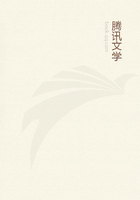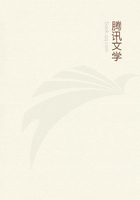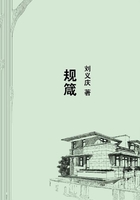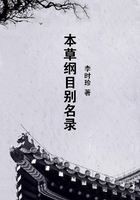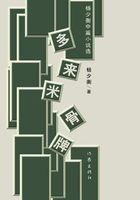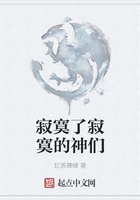Then came the commission which changed the course of Fulton's life.His work had attracted the notice of Viscount Courtenay, later Earl of Devon, and he was invited to Devonshire to paint that nobleman's portrait.Here he met Francis, third Duke of Bridgewater, the father of the English canal system, and his hardly less famous engineer, James Brindley, and also Earl Stanhope, a restless, inquiring spirit.Fulton the mechanic presently began to dominate Fulton the artist.He studied canals, invented a means of sawing marble in the quarries, improved the wheel for spinning flax, invented a machine for making rope, and a method of raising canal boats by inclined planes instead of locks.What money he made from these inventions we do not know, but somewhat later (1796) he speaks hopefully of an improvement in tanning.This same year he published a pamphlet entitled "ATreatise on the Improvement of Canal Navigation", copies of which were sent to Napoleon and President Washington.
Fulton went to France in 1797.To earn money he painted several portraits and a panorama of the Burning of Moscow.This panorama, covering the walls of a circular hall built especially for it, became very popular, and Fulton painted another.In Paris he formed a warm friendship with that singular American, Joel Barlow, soldier, poet, speculator, and diplomatist, and his wife, and for seven years lived in their house.
The long and complicated story of Fulton's sudden interest in torpedoes and submarine boats, his dealings with the Directory and Napoleon and with the British Admiralty does not belong here.
His experiments and his negotiations with the two Governments occupied the greater part of his time for the years between 1797and 1806.His expressed purpose was to make an engine of war so terrible that war would automatically be abolished.The world, however, was not ready for diving boats and torpedoes, nor yet for the end of war, and his efforts had no tangible results.** The submarine was the invention of David Bushnell, a Connecticut Yankee, whose "American Turtle" blew up at least one British vessel in the War of Independence and created much consternation among the King's ships in American waters.
During all the years after 1793, at least, and perhaps earlier, the idea of the steamboat had seldom been out of his mind, but lack of funds and the greater urgency, as he thought, of the submarine prevented him from working seriously upon it.In 1801, however, Robert R.Livingston came to France as American Minister.Livingston had already made some unsuccessful experiments with the steamboat in the United States, and, in 1798, had received the monopoly of steam navigation on the waters of New York for twenty years, provided that he produced a vessel within twelve months able to steam four miles an hour.This grant had, of course, been forfeited, but might be renewed, Livingston thought.
Fulton and Livingston met, probably at Barlow's house, and, in 1802, drew up an agreement to construct a steamboat to ply between New York and Albany.Livingston agreed to advance five hundred dollars for experimentation in Europe.In this same year Fulton built a model and tested different means of propulsion, giving "the preference to a wheel on each side of the model."*The boat was built on the Seine, but proved too frail for the borrowed engine.A second boat was tried in August, 1803, and moved, though at a disappointingly slow rate of speed.
* Fulton to Barlow, quoted in Sutcliffe, "Robert Fulton and the Clermont", p.124.
Just at this time Fulton wrote ordering an engine from Boulton and Watt to be transported to America.The order was at first refused, as it was then the shortsighted policy of the British Government to maintain a monopoly of mechanical contrivances.
Permission to export was given the next year, however, and the engine was shipped in 1805.It lay for some time in the New York Customs House.Meanwhile Fulton had studied the Watt engine on Symington's steamboat, the Charlotte Dundas, on the Forth and Clyde Canal, and Livingston had been granted a renewal of his monopoly of the waters of New York.
Fulton arrived at New York in 1806 and began the construction of the Clermont, so named after Livingston's estate on the Hudson.
The building was done on the East River.The boat excited the jeers of passersby, who called it "Fulton's Folly." On Monday, August 17, 1807, the memorable first voyage was begun.Carrying a party of invited guests, the Clermont steamed off at one o'clock.
Past the towns and villages along the Hudson, the boat moved steadily, black smoke rolling from her stack.Pine wood was the fuel.During the night, the sparks pouring from her funnel, the clanking of her machinery, and the splashing of the paddles frightened the animals in the woods and the occupants of the scattered houses along the banks.At one o'clock Tuesday the boat arrived at Clermont, 110 miles from New York.After spending the night at Clermont, the voyage was resumed on Wednesday.Albany, forty miles away, was reached in eight hours, making a record of 150 miles in thirty-two hours.Returning to New York, the distance was covered in thirty hours.The steamboat was a success.
The boat was then laid up for two weeks while the cabins were boarded in, a roof built over the engine, and coverings placed over the paddle-wheels to catch the spray--all under Fulton's eye.Then the Clermont began regular trips to Albany, carrying sometimes a hundred passengers, making the round trip every four days, and continued until floating ice marked the end of navigation for the winter.

